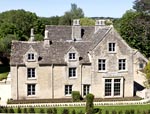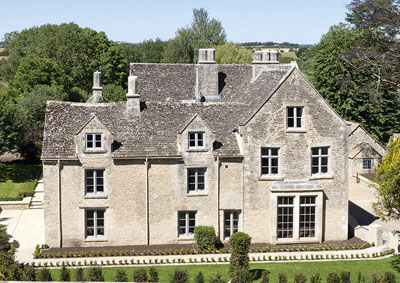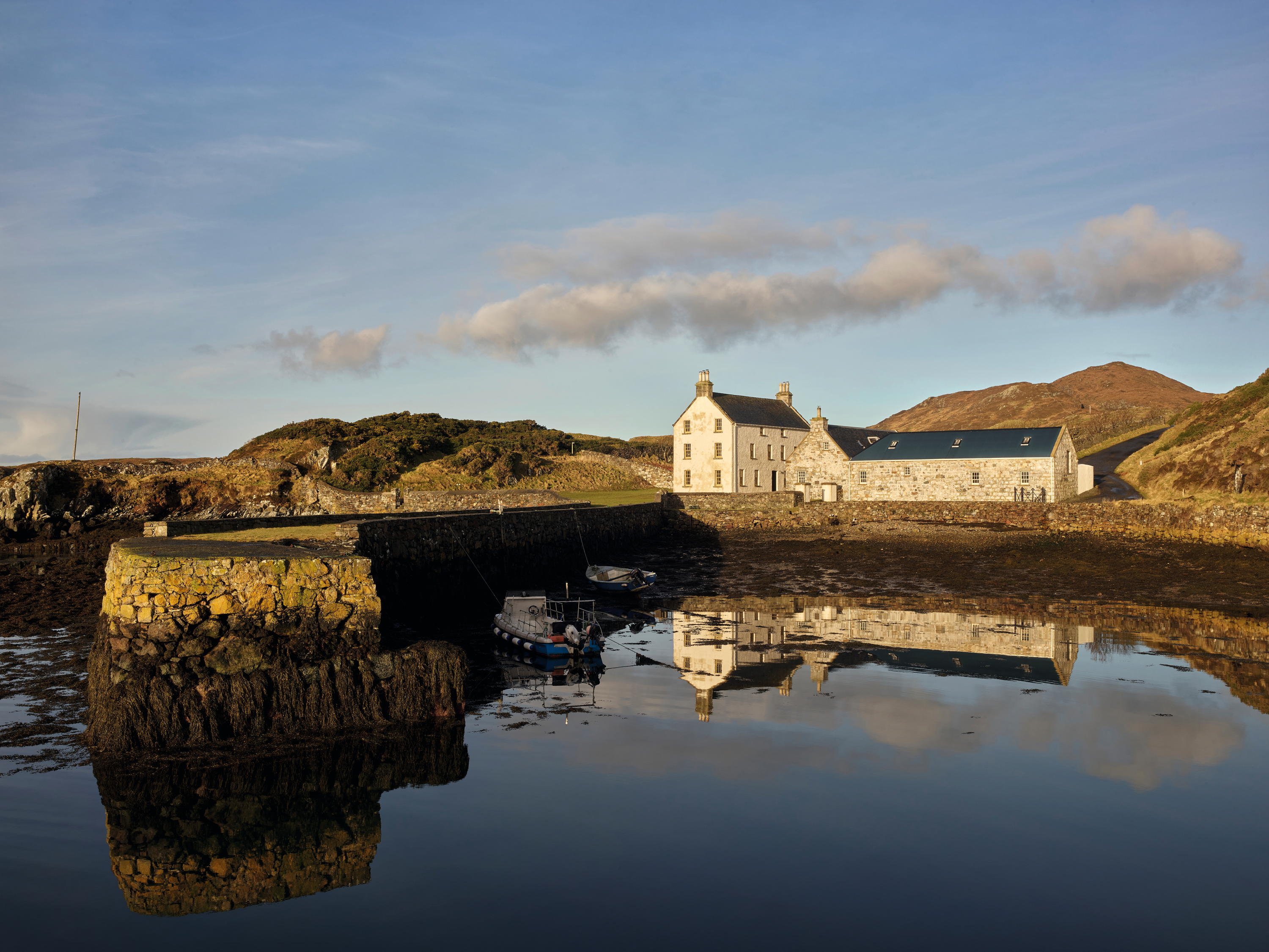Luxury property for sale in the Cotswolds
The Cotswolds still sets the pace, says Penny Churchill, as she looks at some of the best country houses for sale in this sought-after region


In good times or bad, the Cotswolds sets the pace, and our last review of the region's country-house market (May 2, 2012) celebrated the reappearance on the local stage of an impressive number of classic Cotswold manor houses, at prices reminiscent of the days before the financial crisis of August 2007 turned the world on its head. ‘Were it not for its "excess £8 million" price-tag, lovely, Grade II*-listed Broadwell Manor at Broadwell, near Stow-on-the-Wold, Gloucestershire, would sit right at the top of any Cotswold country-house seeker's shopping list,' we suggested, cautiously.
In the event, not only did the manor find a buyer within a few weeks of its launch, but sold for more than its substantial guide price after some seriously competitive bidding. Selling agents Knight Frank followed that up with the sale of ‘the unspoilt Cotswold Georgian gem that everyone dreams of owning' when Grade II-listed Pudlicote near Chadlington, Oxfordshire, fetched ‘considerably more' than its £5.5m asking price.
The supply of classic Cotswold manors is thinner on the ground this autumn, but one that's already causing a stir is The Old Hundred at Tormarton, near Chipping Sodbury, Gloucestershire, for sale for the first time in its history, through Savills (01285 627550) at a guide price of £2.3m. Set in 23 acres of gardens, paddocks and parkland in the heart of the Beaufort Hunt's Wednesday country, The Old Hundred, listed Grade II, has been in the hands of the Codrington family since the late 16th century, as part of the neighbouring Dodington Park estate, now owned by the inventor Sir James Dyson.
The Old Hundred's vivacious owner, Pamela Codrington, has lived at the house for the past 32 years, and at Dodington Park for 20 years prior to that, and it will be a huge wrench for her to leave. But her three sons have all flown the nest, so it finally makes sense for Mrs Codrington to downsize from her gloriously rambling eight-bedroom manor house, with its beautifully converted kitchen wing, coach house and stable flat, which together provide her with a substantial income from holiday lets. Besides, she's always loved to travel, and there are countries off the beaten track she plans to explore, with Ethiopia currently high on the list.
The Old Hundred has evolved over the centuries in three distinct phases, with various Codringtons adding to the house, but taking nothing away. The oldest part of the manor is the former service wing, now two separate flats, the lower of which incorporates the original late-17th-century dwelling, with its fireplace and windows. The central, Georgian part of the house was built in 1711, using Cotswold stone quarried on site; the late-Victorian section was added by Sir Gerald Codrington in 1896. Bridging the divide between the Queen Anne and Victorian parts of the house is the elegant main drawing room and, beyond it, the dining room, which has ample room to seat 16 guests.
In 1996, Mrs Codrington added the spectacular, stone-built orangery overlooking the walled formal gardens, which echoes the design of Oliver Messel's Caribbean retreat, Maddox in Barbados, which her husband at the time, Mr Antony Johnson, had bought from the Messel family after his death.** Accommodation in the main house includes the spacious reception hall, with its original wooden staircase and flagstone floor, three principal reception rooms, a library, two studies, six bedrooms and four bedrooms on the first floor, plus a further two bedrooms and a bathroom on the second. And reflecting the Codrington family's long association with the Beaufort Hunt, outbuildings include a stable yard with four loose boxes, a tack room and a hay store.
For part of its life, The Old Hundred was the dower house to Dodington Park, and such houses always rank high on any Cotswold homebuyer's wish-list. Although once a farmhouse, The Dower House at nearby Somerford Keynes, on the Gloucestershire/Wiltshire border, has a typically 18th-century air, with its classic Georgian three-bay façade.
Sign up for the Country Life Newsletter
Exquisite houses, the beauty of Nature, and how to get the most from your life, straight to your inbox.
The charming stone house has been cleverly extended over the years and is larger than it looks, with accommodation on three floors, including three light and spacious reception rooms, five/six bedrooms, two dressing rooms and four bathrooms. It stands back from the road in an acre of garden framed by deep herbaceous borders and a high Cotswold stone wall, next door to Grade II- listed Somerford Keynes House, to which it originally belonged. This Cotswold gem is for sale through Strutt and Parker (01285 653101) at a guide of £960,000.
There are never enough old rectories to go round in the Cotswolds either. For Atty Beor-Roberts of Knight Frank's Cirencester office, the pick of his autumn crop is The Glebe House at Turkdean, two miles from Northleach, Gloucestershire, a Grade II-listed former rectory of Tudor origin built in 1847 by Thomas Bridges of Cirencester, and set in 2.9 acres of gardens, paddock and woodland on the edge of this ancient village.
The house has had only three owners since it was sold by the Church at the turn of the 19th century, and still enjoys the same lovely views over the surrounding countryside. For sale through Knight Frank (01285 659771) at a guide price of £2.6m, The Glebe House has been lovingly maintained by its present owners, who have lived there for the best part of two decades. Accommodation and amenities include three reception rooms, a kitchen/breakfast room, five/six bedrooms, three bathrooms, a coach house with planning consent for conversion, a vegetable garden and a tennis court.
Even in the midst of recession, the perennial appeal of the Cotswold old rectory prompted an enterprising firm of specialist builders, S. & S. Construction of Buckingham, to embark on the renovation of The Old Rectory in the tiny village of Kencot, Oxfordshire, a Grade II-listed, 17th-century building it bought in a state of disrepair in 2009. Following a 14-month renovation programme, which has seen the fabric of the building restored to its original splendour but the interior adapted to the living requirements of the 21st century, The Old Rectory is for sale through Sotheby's International Realty (01789 200900) at a guide price of £2.175m.

* Subscribe to Country Life and get our Ipad edition for free:
The original rectory, built of Cotswold stone under a stone-slate roof, doubled in size in 1857, when London architect F. J. H. Francis designed a tall, L-plan, north-eastern block to interlock with the original 17th-century building. Kencot rectory has had an intriguing succession of rectors over the years, some conscientious in their religious duties, others decidedly less so. It remained an independent rectory until 1966, when the parishes of Broadwell and Kencot were united.
Set in 11⁄2 acres of beautifully landscaped gardens that now boast a brand-new swimming pool, the imposing family house has four main reception rooms, a kitchen/breakfast room, a media room, a master suite, seven further bedrooms and seven bathrooms. And, following its first successful foray into the Cotswolds, S. & S. Construction is about to embark on a second building project, this time in the quintessential Cotswold village of Bourton-on-the-Hill.
Having bought The Old Rectory at Shenington, near Banbury, Oxfordshire, from the Church in 1979, Keith Hainsworth and his family moved in 1995 to the historic, Jacobean Mill House, the only house in the village to survive a disastrous fire in 1721. There, they spent the next several years undoing inappropriate ‘improvements' made by their predecessors and restoring the integrity of the house, which has three reception rooms, a kitchen/breakfast room, a billiards room, four/five bedrooms, four bathrooms and extensive cellars.
The enchanting garden has been Mrs Hainsworth's area of special expertise, designed to take full advantage of breathtaking views to the south. Strutt & Parker (01295 273592) quotes a guide price of £1.65m for Mill House, listed Grade II, whose 1.3 acres of grounds include a paddock and stabling. Horses are central to life in the Cotswolds, and Rob Jones-Davies of buying agents Middleton Advisors expects the equestrian market in the Cotswolds to get hotter than ever, given that Britain's Olympic dressage team is based in Gloucestershire. Two small Cotswold estates currently on the market are perfectly suited perfectly to high-level training in any of the major equestrian disciplines.
Hartshill at Chedworth, near Cheltenham, Gloucestershire, is the centre of a scenic, 62-acre estate, home to the private Hartshill Stud, where several well-known horses, including Red Marauder, winner of the 2001 Grand National, have been bred. Hartshill has also been home to the vendor, who bought the property as three period cottages in 1968 and has since transformed them into a delightful family house, with three reception rooms, a large fitted kitchen with a family room and garden room, six bedrooms, four bathrooms and a staff annexe. Chesterton Humberts in Cirencester (01285 650955) quote a guide price of £2.5m for Hartshill, where equestrian facilities include a modern, stone-built stable yard, a horse walker and manège and eight well-fenced grass paddocks.
Finally, the aptly named Well Furlong at Little Comberton, 15 miles from Cheltenham, is a picturesque, 82-acre farming estate at the foot of Bredon Hill, famed for its many miles of delightful bridleways and footpaths. At its heart is a substantial country house with light, well-proportioned rooms, including three reception rooms, a family room, a kitchen/breakfast room, five main bedrooms, four bathrooms and an indoor swimming pool. Well Furlong is for sale through Knight Frank (01285 659771) at a guide price of £1.95m for the house with a staff cottage, garaging and eight acres of orchards, formal gardens and a four-acre horse enclosure, or at £2.5m with an additional 71 acres of organic farmland.
** CORRECTION: In the printed version of this article published in Country Life (September 26, 2012), we incorrectly stated that Pamela Codrington had bought Maddox from the Messel family with her husband at the time, Antony Johnson. In fact, Mr Johnson bought the house before his marriage to Pamela.
* Subscribe to Country Life and save £1 per issue
Country Life is unlike any other magazine: the only glossy weekly on the newsstand and the only magazine that has been guest-edited by HRH The King not once, but twice. It is a celebration of modern rural life and all its diverse joys and pleasures — that was first published in Queen Victoria's Diamond Jubilee year. Our eclectic mixture of witty and informative content — from the most up-to-date property news and commentary and a coveted glimpse inside some of the UK's best houses and gardens, to gardening, the arts and interior design, written by experts in their field — still cannot be found in print or online, anywhere else.
-
 Rodel House: The Georgian marvel in the heart of the Outer Hebrides
Rodel House: The Georgian marvel in the heart of the Outer HebridesAn improving landlord in the Outer Hebrides created a remote Georgian house that has just undergone a stylish, but unpretentious remodelling, as Mary Miers reports. Photographs by Paul Highnam for Country Life.
By Mary Miers Published
-
 380 acres and 90 bedrooms on the £25m private island being sold by one of Britain's top music producers
380 acres and 90 bedrooms on the £25m private island being sold by one of Britain's top music producersStormzy, Rihanna and the Rolling Stones are just a part of the story at Osea Island, a dot on the map in the seas off Essex.
By Lotte Brundle Published
